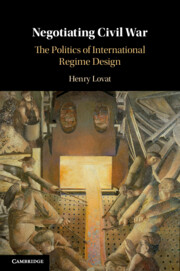Book contents
- Negotiating Civil War
- Negotiating Civil War
- Copyright page
- Dedication
- Contents
- Figures
- Acknowledgements
- Introduction
- 1 Theorising the Civil War Regime
- 2 Historical Precursors and Regime Origins
- 3 Negotiating Common Article 3 (1949)
- 4 The Additional Protocols of 1977
- 5 War Crimes and Internal Armed Conflict in the Rome Statute (1998)
- 6 Explaining the Civil War Regime
- Conclusion
- Bibliography
- Index
4 - The Additional Protocols of 1977
Published online by Cambridge University Press: 17 August 2020
- Negotiating Civil War
- Negotiating Civil War
- Copyright page
- Dedication
- Contents
- Figures
- Acknowledgements
- Introduction
- 1 Theorising the Civil War Regime
- 2 Historical Precursors and Regime Origins
- 3 Negotiating Common Article 3 (1949)
- 4 The Additional Protocols of 1977
- 5 War Crimes and Internal Armed Conflict in the Rome Statute (1998)
- 6 Explaining the Civil War Regime
- Conclusion
- Bibliography
- Index
Summary
The chapter opens with an overview of the discussions on internal armed conflict at the four sessions of the diplomatic conference convened between 1974 and 1977 (the ‘CDDH’) which led to the conclusion of the first two Additional Protocols to the 1949 Conventions. The chapter then considers key outcomes of the CDDH – Article 1(4) of Protocol I, which requires ‘wars of national liberation’ to be treated as international rather than internal armed conflicts, and Protocol II in terms of both scope and content – from the perspective of the principal actors in the negotiations, in this instance the USA, UK, Canada, Nordic states (particularly Norway), Australia, Egypt, India, Pakistan, the Soviet Union and ICRC. In this instance, the provisions on internal armed conflict primarily reflected the preferences of materially less powerful states: the 1974 negotiation of Article 1(4) also illustrates well the limited efficacy of moral persuasion, technical authority and principled argument in the absence of a normative consensus across delegations. The 1977 drafting of Protocol II, in contrast, highlights the ability of weaker powers to deploy moral and technical authority alongside principled argument to bring about drafting outcomes.
Keywords
- Type
- Chapter
- Information
- Negotiating Civil WarThe Politics of International Regime Design, pp. 139 - 203Publisher: Cambridge University PressPrint publication year: 2020



